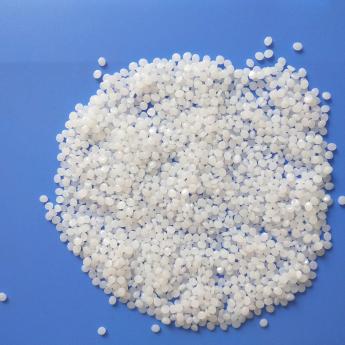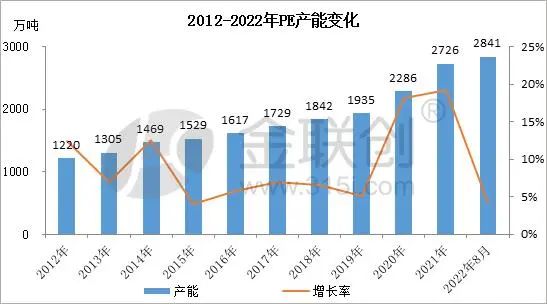-
 What is HDPE ?09 08,2022
What is HDPE ?09 08,2022HDPE is defined by a density of greater or equal to 0.941 g/cm3. HDPE has a low degree of branching and thus stronger intermolecular forces and tensile strength. HDPE can be produced by chromium/silica catalysts, Ziegler-Natta catalysts or metallocene catalysts. The lack of branching is ensured by an appropriate choice of catalyst (e.g. chromium catalysts or Ziegler-Natta catalysts) and reaction conditions. HDPE is used in products and packaging such as milk jugs, detergent bottles, margarine tubs, garbage containers and water pipes. HDPE is also widely used in the production of fireworks. In tubes of varying length (depending on the size of the ordnance), HDPE is used as a replacement for the supplied cardboard mortar tubes for two primary reasons. One, it is much safer than the supplied cardboard tubes because if a shell were to malfunction and explode inside ("flower pot") an HDPE tube, the tube will not shatter. The second reason is that they are reusable allowing designers to create multiple shot mortar racks. Pyrotechnicians discourage the use of PVC tubing in mortar tubes because it tends to shatter, sending shards of plastic at possible spectators, and will not show up in X-rays.
-
 The production capacity of PE continues to increase, and the structure of import08 31,2022
The production capacity of PE continues to increase, and the structure of import08 31,2022In August 2022, the HDPE plant of Lianyungang Petrochemical Phase II was put into operation. As of August 2022, China's PE production capacity increased by 1.75 million tons during the year. However, considering the long-term production of EVA by Jiangsu Sierbang and the extension of the second phase of LDPE/EVA plant, its 600,000 tons / The annual production capacity is temporarily stripped from PE production capacity. As of August 2022, China's PE production capacity is 28.41 million tons. From the perspective of comprehensive production, HDPE products are still the main products for capacity expansion during the year. With the continuous increase of HDPE production capacity, the competition in the domestic HDPE market has intensified, and the structural surplus has gradually emerged. Lianyungang Petrochemical and other sets of plants have been shut down for a long time or opened in stages. With the continuous increase of PE production capacity, the import and export volume of various PE varieties has also undergone relatively obvious structural changes. From the perspective of the import volume of PE varieties from 2020 to 2022, in 2021, China's PE import volume will decrease significantly. On the whole, the PE import volume in 2021 will be about 14.5887 million tons, a decrease of 3.9449 million tons or 21.29% compared with 2020. Among them, the import volume of LDPE was about 3,059,200 tons, a decrease of 331,400 tons or 9.77% compared with 2020; the import volume of LLDPE was about 4,896,500 tons, a decrease of 1,148,800 tons or 19.00% compared with 2020; the import volume of HDPE was about 6,633,000 tons, a decrease of 19.00%. In 2020, it will drop by 2.4646 million tons, a decrease of 27.09%. Judging from the import data of various PE products in 2021, the import volume of HDPE varieties has the largest decline. From January to July 2022, PE imports are about 7.589 million tons, down 1.1576 million tons or 13.23% from the same period in 2021. Among them, the import volume of LDPE was about 1,700,900 tons, a decrease of 128,100 tons or 7.01% compared with the same period in 2020; the import volume of LLDPE was about 2,477,200 tons, a decrease of 539,000 tons or a decrease of 17.84% compared with the same period in 2020; the import volume of HDPE was about 3,410,900 tons , a decrease of 491,500 tons or 12.59% from the same period in 2020. Judging from the import data of various PE products in 2022, due to the low price of domestic HDPE and the structural imbalance of some varieties, many domestic HDPE plants have been shut down for a long time or have been opened in stages. From January to July, China's LLDPE imports fell even more Large, followed by HDPE. From the perspective of the follow-up import trend of PE, the current international comprehensive demand is weak. With the drop in the price of external disks, the arbitrage window for internal and external disks has opened in stages, and the intention of selling resources from the Middle East, Europe and the United States to China has increased. Since August, the import volume of PE may increase in stages. However, it is expected to remain lower than the same period in 2021 year-on-year. From the perspective of the export volume of PE varieties from 2020 to 2022, China's PE export volume will increase significantly in 2021. Overall, the PE export volume in 2021 will be about 511,200 tons, an increase of 258,900 tons or 102.60% over 2020. Among them, the export volume of LDPE is about 153,700 tons, an increase of 7.05 tons or 84.79% compared with 2020; the export volume of LLDPE is about 79,100 tons, an increase of 42,100 tons compared with 2020, an increase of 113.46%; the export volume of HDPE is about 278,400 tons, compared with 2020 The annual increase was 146,300 tons, an increase of 110.76%. Judging from the export data of PE products in 2021, the export volume of HDPE varieties will increase the most, but the growth rate of LLDPE will be the largest. From January to July 2022, the export volume of PE is about 436,500 tons, an increase of 121,600 tons or 38.60% over the same period in 2020. Among them, the export volume of LDPE was about 117,200 tons, an increase of 2.53 tons or 27.54% over the same period in 2020; the export volume of LLDPE was about 116,100 tons, an increase of 69,000 tons over the same period in 2020, an increase of 146.16%; the export volume of HDPE was about 203,200 tons, Compared with the same period in 2020, it increased by 27,300 tons, an increase of 15.52%. Judging from the export data of various PE products in 2022, the domestic PE export volume is still the largest in HDPE. However, due to the long-term shutdown or phased opening of many sets of HDPE plants in China during the year, the growth rate of HDPE exports is lower than that of other varieties.
-
 The impact of power shortage and shutdown in many places on the polypropylene in08 23,2022
The impact of power shortage and shutdown in many places on the polypropylene in08 23,2022Recently, Sichuan, Jiangsu, Zhejiang, Anhui and other provinces across the country have been affected by the continuous high temperature, and the electricity consumption has soared, and the electricity load has continuously hit new highs. Affected by the record-breaking high temperature and the surge in electricity load, the power curtailment "swept again", and many listed companies announced that they had encountered "temporary power curtailment and production suspension", and both upstream and downstream enterprises of polyolefins were affected. Judging from the production situation of some coal chemical and local refining enterprises, the power curtailment has not caused fluctuations in their production for the time being, and the feedback received has no impact. It can be seen that the power curtailment has little impact on the production enterprises. From the perspective of terminal demand, the current downstream enterprises are relatively severely affected by electricity curtailment, but there are relatively clear geographical restrictions. Downstreams such as North China and South China have not yet received clear feedback on power curtailment, while the impact is more serious in East, West and South China. At present, the downstream industry of polypropylene has been affected, whether it is a listed company with better efficiency or a small factory such as plastic weaving and injection molding; Zhejiang Jinhua, Wenzhou and other places have power curtailment policies based on opening four, stopping three, and a few small and micro enterprises. Open two and stop five; other areas mainly limit the amount of electricity consumption, and the starting load is reduced to less than 50%. To sum up, this year’s “power curtailment” is relatively different from last year. The reason for this year’s power curtailment is more of insufficient power resources, allowing electricity to be used by the people and ensuring electricity consumption for people’s livelihood. Therefore, this year’s power curtailment affects upstream production enterprises. The impact is minimal, and the impact on downstream small and micro enterprises is greater, and the downstream demand for polypropylene is severely restricted.
-
 What are the Characteristics of Polypropylene (PP)?08 19,2022
What are the Characteristics of Polypropylene (PP)?08 19,2022Some of the most significant properties of polypropylene are: 1.Chemical Resistance: Diluted bases and acids don’t react readily with polypropylene, which makes it a good choice for containers of such liquids, such as cleaning agents, first-aid products, and more. 2.Elasticity and Toughness: Polypropylene will act with elasticity over a certain range of deflection (like all materials), but it will also experience plastic deformation early on in the deformation process, so it is generally considered a "tough" material. Toughness is an engineering term which is defined as a material's ability to deform (plastically, not elastically) without breaking.. 3.Fatigue Resistance: Polypropylene retains its shape after a lot of torsion, bending, and/or flexing. This property is especially valuable for making living hinges. 4.Insulation: polypropylene has a very high resistance to electricity and is very useful for electronic components. 5.Transmissivity: Although Polypropylene can be made transparent, it is normally produced to be naturally opaque in color. Polypropylene can be used for applications where some transfer of light is important or where it is of aesthetic value. If high transmissivity is desired then plastics like Acrylic or Polycarbonate are better choices. Polypropylene is classified as a “thermoplastic” (as opposed to “thermoset”) material which has to do with the way the plastic responds to heat. Thermoplastic materials become liquid at their melting point (roughly 130 degrees Celsius in the case of polypropylene). A major useful attribute about thermoplastics is that they can be heated to their melting point, cooled, and reheated again without significant degradation. Instead of burning, thermoplastics like polypropylene liquefy, which allows them to be easily injection molded and then subsequently recycled. By contrast, thermoset plastics can only be heated once (typically during the injection molding process). The first heating causes thermoset materials to set (similar to a 2-part epoxy) resulting in a chemical change that cannot be reversed. If you tried to heat a thermoset plastic to a high temperature a second time it would simply burn. This characteristic makes thermoset materials poor candidates for recycling.




